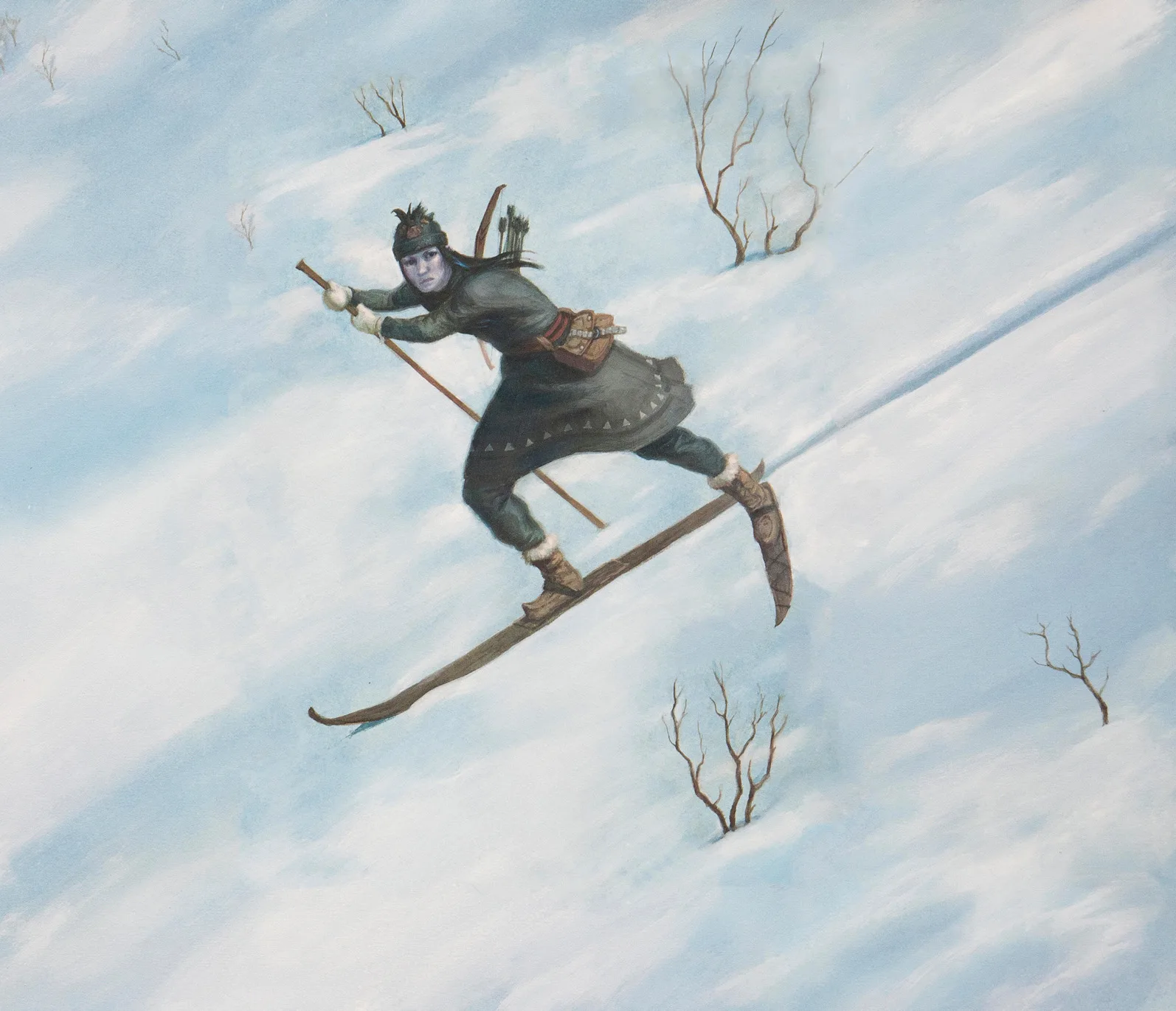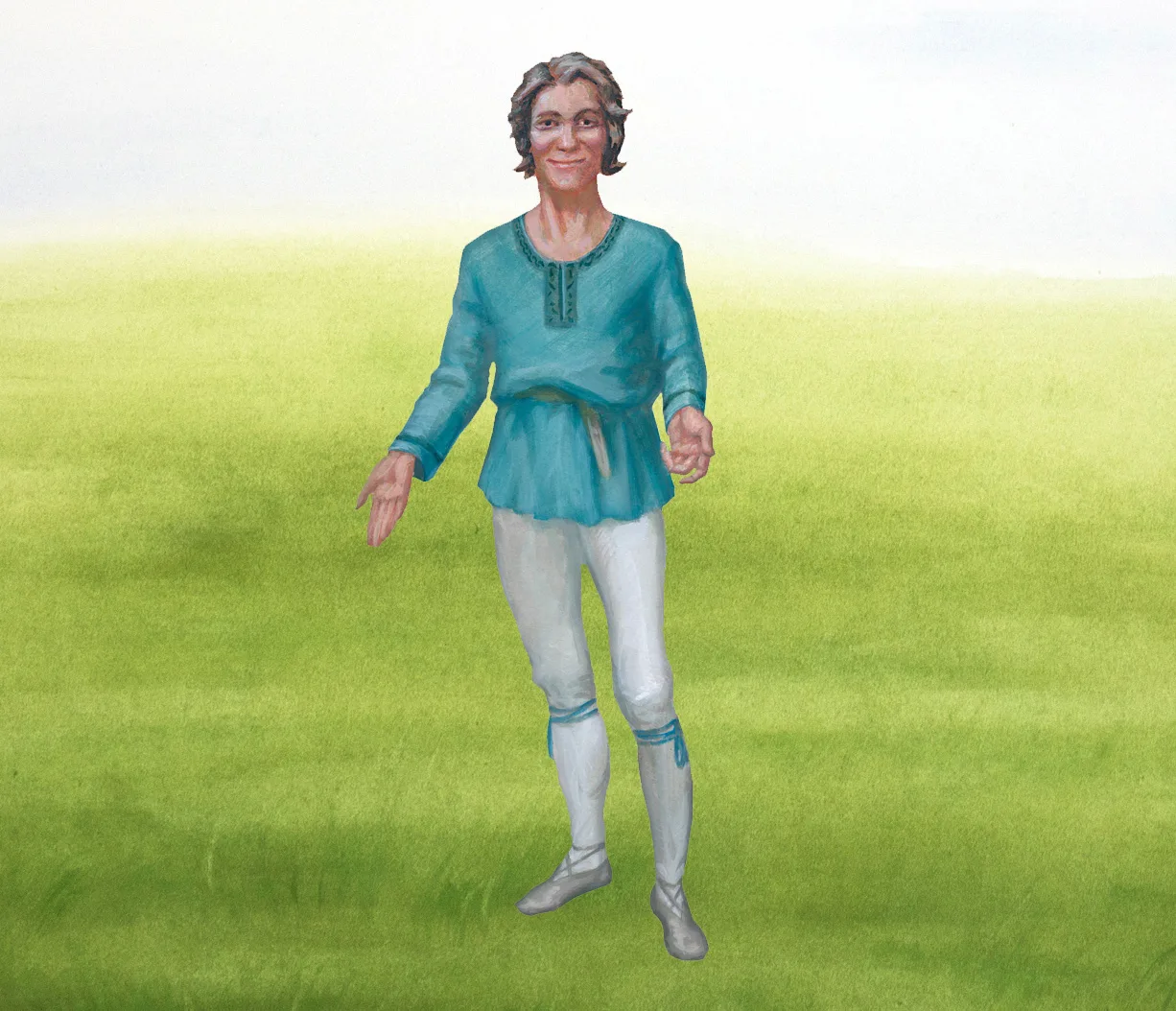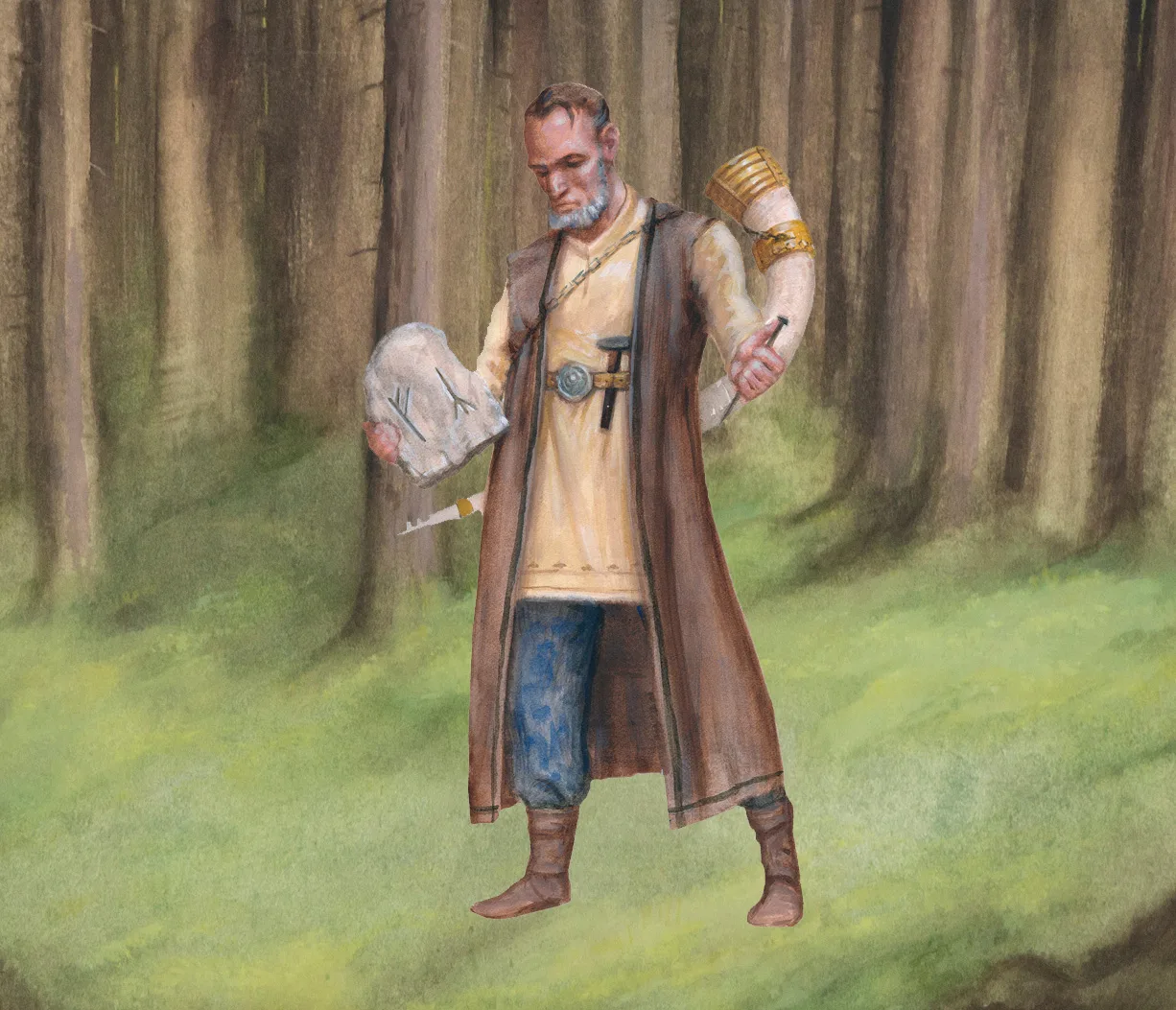Skadi – goddess of the wilderness
Iron Age
500 BC – AD 1100
Viking Age
AD 800 – AD 1100
Middle Ages
AD 1050 – AD 1520
Skadi is an enigmatic figure, with a masculine name and similarities to the god Ullr, who in the myths is described as a handsome man on skis or snowshoes.

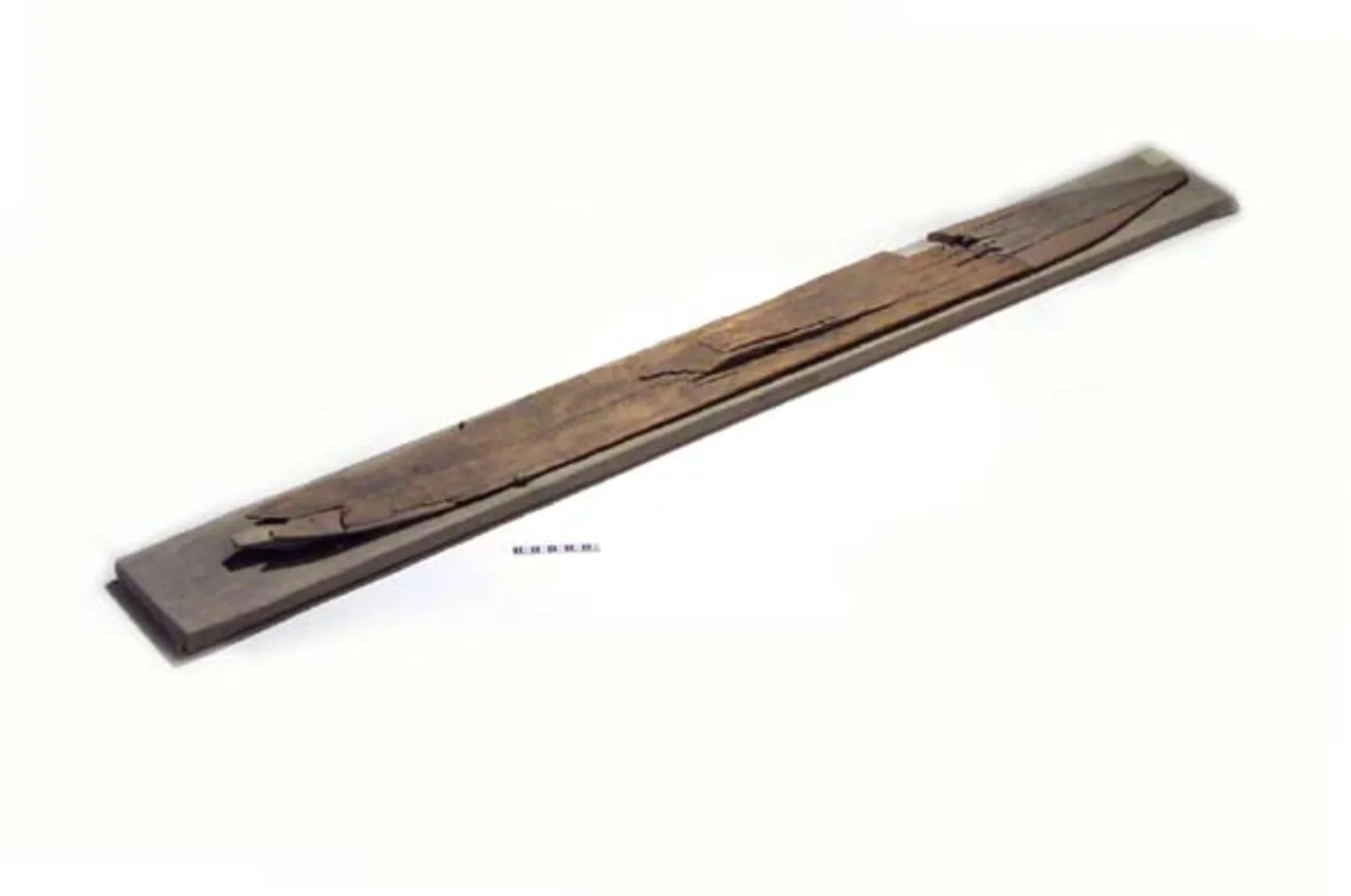
Ski
A wooden ski found at Bastusund, Norrbotten. Perhaps Skadi could have used one like this.
When Skadi sought vengeance
Skadi came to Asgard, the dwelling of the gods, to avenge her father, the giant Thjazi, who had been slain by the Æsir. She arrived armed, wearing a helmet, a byrnie and full battle gear.
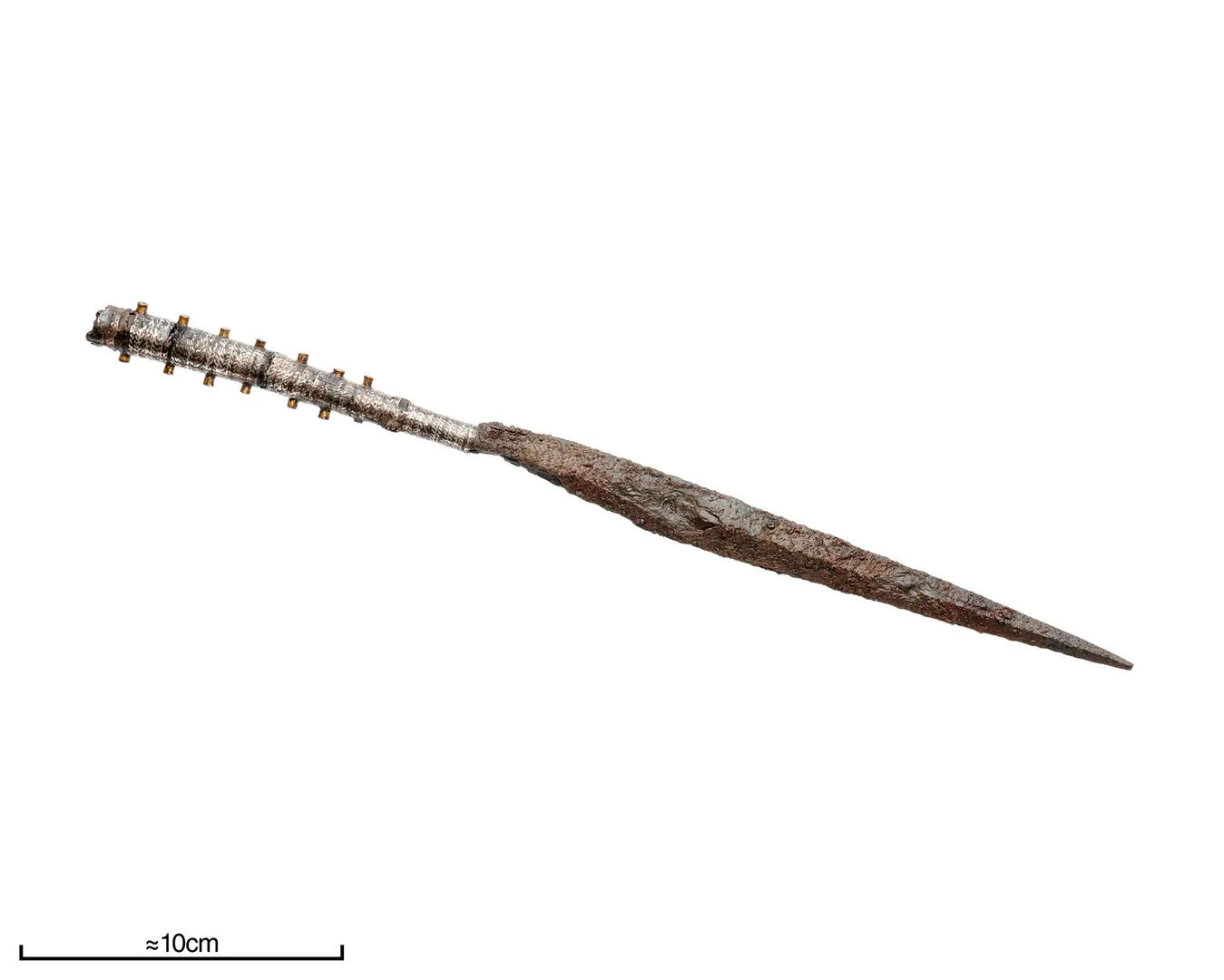
Spear
A spear head of iron found in Viking Age grave Bj 581 at Birka, Uppland. Perhaps Skadi would have been armed with something like this.
On view at Historiska museet in the exhibition Vikingarnas världFind this object in display 13, Vikingarnas värld Monter 13
The gods offered Skadi compensation in place of vengeance. She was to marry one of the gods, but had to choose by looking only at their feet. Skadi wished to marry Baldr(Balder) and assumed that the fairest feet must be his. But she was mistaken, the feet belonged instead to the sea god Njord.
Skadi herself set a further condition in order to forgo her revenge: the gods had to make her laugh. Loki then tied a rope to a goat’s beard and the other end to his testicles. As the goat leapt about, Loki howled until at last he fell straight into Skadi’s lap – at which point she laughed! As a gift, Odin cast Skadi’s father’s eyes into the sky. They became stars, which pleased her.
An unhappy marriage
The marriage between Skadi and Njord was not a happy one. Njord longed to live by the sea, in his hall Noatun, and hear the cry of the gulls. Skadi wanted to dwell in the mountains and hear the howling of wolves at her home in Thrymheim. They agreed to spend nine nights in each place. But they soon wearied of the arrangement and thereafter lived apart.
Facts about Skadi
- Name: Skadi (also spelt Skaði)
- Parents: Thjazi (giant) – mother not mentioned in the sources
- Siblings: None known
- Attributes: Proud, independent, strong, beautiful
- Symbolism: Winter, hunting, skiing, mountains, vengeance
- Resides: Initially Jotunheim – later partly in Asgard (married to Njord, but prefers the mountains)




